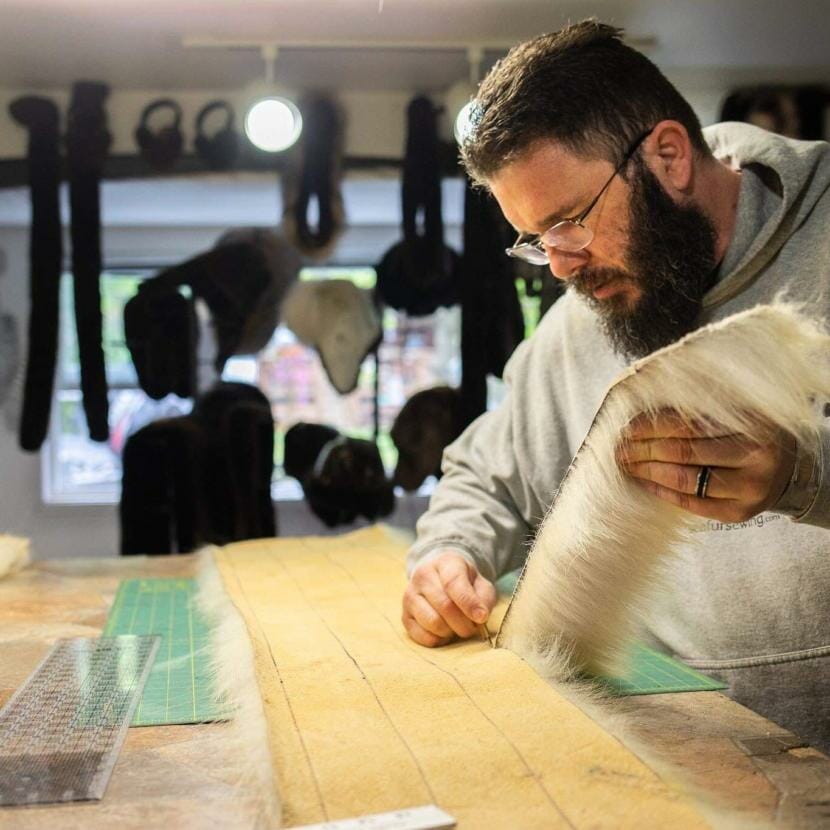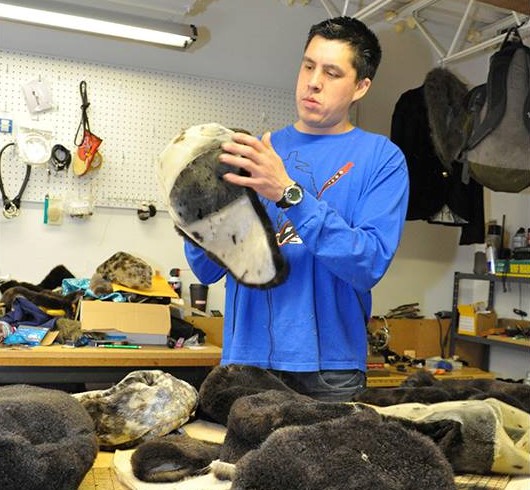
The biennial Celebration, one of the largest gatherings of Alaska Natives in the country, brings an estimated $2 million to Juneau in just four days.
While the city will miss out on bed and sales tax revenue this year thanks to the pandemic, Native artists who come from all over to sell their work will feel the financial hit even more.
Walking through the artist market at Celebration in years past, visitors would have seen rows of tables covered in copper jewelry, intricate weavings and beautiful formline carvings.
This year, with the in-person event postponed, Sealaska Heritage Institute still wanted to support artists. So, they created a virtual marketplace.
Chief Operating Officer Lee Kadinger said they reached out to artists across the state. Fewer than 20 participated.
“Typically in a Celebration year, we have approximately 60 artists booths,” Kadinger said. “So there’s, you know, definitely about a third of what we usually have.”
Artists submitted short videos showcasing their work, which ran between segments during the virtual program. Their contact information is also listed on the Celebration website.
“We recognize that that’s not going to be nearly as impactful as having a booth with a table here with thousands of people streaming past on a daily basis,” he said. “But it was a way to hopefully, you know, provide some assistance and relief to artists in these difficult times.”
According to a study by the McDowell Group, during the last Celebration attendees spent an estimated $40,000 in the artists market.
Celebration isn’t the only gathering canceled this year, and that will make things hard for some of the Native artists who exclusively sell their products at artist markets.
Kuxháach Jeremiah James is Tlingit of the Kaagwaantaan clan. He’s from Yakutat and works mainly with seal and otter skins.
He’s been selling blankets and pelts at Celebration since 2012, but he didn’t have time to submit anything to the virtual market.
“It’s pretty hard to sell sea otter blankets and hats and scarves until you touch the sea otter,” James said. “You don’t make those connections over the phone or internet connections when you’re moving a blanket at $8,000 or $10,000.”
James said he also sells his work at the annual Alaska Federation of Natives convention. But it’s not clear whether that event will take place this year.

Not all artists rely on markets. But some — particularly those who specialize in mediums like sea otter fur or walrus ivory — avoid online retail sites.
That’s because digital markets like Etsy have a history of removing listings made with those materials, even though Alaska Native people are legally allowed to hunt and use them to make traditional handicrafts.
Robert Miller is Tlingit of the Kiks.ádi clan. He lives in Sitka and has been working with furs for about eight years.
Miller said he’s always relied on online sales for his business, and he’s built up a small but loyal client base through his website.
“When this pandemic started, I was like, you always gotta throw something new into the mix,” Miller said. “So I found some polar bear that I could work with and you know, you just change it up. You’re always changing it up and putting new things on the market.”
He even managed to find new clients out of state.
Miller said participating in business development programs through Path to Prosperity and the Alaska Small Business Development Center has helped him get a handle on the online market.
Both James and Miller have also taught skin sewing classes through Sealaska Heritage Institute in the past as a way to continue educating others in traditional arts.
Even though it will be harder to sell this year without the in-person market, James said his business will get by. Anyway, the artist market isn’t the part of Celebration he loves the most.
Earlier in the week, he and a friend sat on a remote beach north of Yakutat and watched videos of dance groups on the stage in Juneau’s Centennial Hall from the last Celebration. He’s a dancer too, performing with the Mount St. Elias dancers from Yakutat.
“That’s what I miss about Celebration, is the dance groups and being in that atmosphere in that room,” he said.
